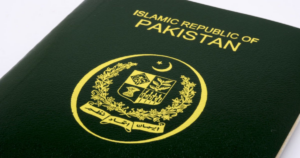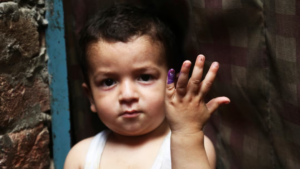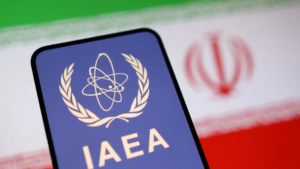
In January, Singapore’s Ministry of Home Affairs announced the arrest of a 16-year-old boy under the nation’s Internal Security Act (ISA). The Secondary 4 student was the first detainee to be inspired by extreme right-wing ideologies and the youngest person to be handled under ISA on terrorism-related charges. The unprecedented arrest highlighted the need for Singapore’s approach to violent extremism to find ways of dealing with extremist ideologies beyond militant Islamism.
The 16-year-old protestant Christian was reportedly self-radicalized online and motivated by a strong sense of antipathy towards Islam and fascination for violence. He was particularly inspired by the New Zealand Christchurch attacks that took place in March 2019, and decided to replicate the attack at two local mosques on the same day, March 15, to commemorate the second anniversary of the carnage. His consumption of Islamic State (IS) propaganda reaffirmed his anti-Muslim sentiments when he “came to the erroneous conclusion that IS represented Islam, and that Islam called on its followers to kill non-believers.”
The youth’s detention became the center of eight questions filed by members of the Singapore Parliament. During a February 16 parliamentary session, the government indicated that Singapore is constantly fortifying its measures and policies to meet the evolving threat of terrorism, including stricter measures on procurement of offensive weapons and firearms. Even so, these improved hard preventive measures must be accompanied by improved soft countering measures like rehabilitation policies.
While the fundamentals of inter-religious harmony remain stable and robust in multicultural Singapore, authorities know that this state of affairs cannot be taken for granted. Hence, while the arrest of the country’s first far-right extremist was novel, the anti-Muslim sentiments he displayed were not exactly a bolt out of the blue. The Centre for Research on Islamic and Malay Affairs (RIMA) has observed an increase in anti-Muslim sentiments posted on local social media, and is seeing more instances of microaggressions and discrimination towards the city-state’s Muslim community. This observation corresponds with a 2019 Institute of Policy survey which revealed that while majority of Singaporeans felt that “people of different faiths can get along when living close together,” some 15 percent of Singaporeans find Muslims “threatening.”
Diplomat Brief Weekly Newsletter N Get briefed on the story of the week, and developing stories to watch across the Asia-Pacific. Get the Newsletter
To take some concrete examples, in 2016, three madrasah students on their way to school were attacked by a Chinese man. The following year, the word “terrorist” was scrawled across the picture of a woman wearing a hijab outside an MRT station. Just last year, a 19-year-old Temasek Polytechnic student was detained for making “alarming and offensive posts” against Muslims on his social media account. He claimed to have dreamt about going on a shooting spree and massacring Muslims with an AR-15 assault rifle. Such incidents suggest that far-right extremism, fueled by anti-Muslim prejudice, is potentially as significant a challenge as the Islamist extremism with which Singapore has long been familiar.
Enjoying this article? Click here to subscribe for full access. Just $5 a month.
Singapore’s Preventing and Countering Violent Extremism (P/CVE) efforts are shaped by its encounter with the terrorist group Jemaah Islamiyah (JI), and the continuous exchange of intelligence and expertise with its neighboring countries. Singapore’s rehabilitation program was only formulated in the early 2000s following a series of arrests involving militants from JI.
In 2003, the Singapore government set up the Religious Rehabilitation Group (RRG) out of an urgent need to “address the misinterpretations of several Islamic concepts such as jihad and bai’ah (pledge of allegiance).” The RRG’s main objective is to rehabilitate detained JI members and their family members through various forms of counseling. RRG’s mission has since expanded to include “self-radicalized individuals and those in support of IS,” and the group also conducts outreach programs designed to educate the public. The group’s efforts have grown in tandem with the heightened terror activities and growing IS network within Southeast Asia. Given the nature of the threat, Singapore’s P/CVE efforts have mostly been focused on addressing Islamist radicalization.
To further mitigate the Islamist jihadist threat, Singapore rolled out an initiative to mobilize the nation called SGSecure, which aims to to help Singaporeans identify the terrorism threat and the actions they can take during an attack.
Today, pro-Islamic State groups like the Jamaah Ansharut Daulah (J), Mujahideen Indonesia Timur (Mujahideen of Eastern Indonesia, or MIT), Abu Sayyaf Group (ASG), and Bangsamoro Islamic Freedom Fighters (BIFF) continue to dominate the terrorist landscape in Southeast Asia. However, the recent arrest in Singapore highlights the need for security agencies to look beyond the region and prepare for threats which have largely appeared in the West so far. These include extreme right-wing ideology, or XRW for short.
Violent XRW gained traction in 2011 after Anders Behring Breivik massacred 77 people at a conference for young people in Oslo, Norway. His manifesto, entitled “2083 – A European Declaration of Independence,” detailed disturbing Islamophobia and linked the acceptance of diversity to the purported genocide of European culture. However, contemporary XRW sentiments gained popularity in Europe after the Muslim refugee migration in 2014. This diversified the culturally homogeneous region and increased social polarization. Populist xenophobic sentiments have since come to dominate the political narratives in many countries.
Breivik remains the paragon of violent Islamophobia, racism, and xenophobia. His manifesto, a bible to many XRW groups, inspired the March 15, 2019 Christchurch massacre and the August 4, 2019 . The arrested 16-year-old Singaporean was reportedly influenced by Brenton Tarrant, the perpetrator of the Christchurch massacre, a potent illustration of the transferability of extreme ideologies between the different socio-cultural contexts of Singapore and the West.
The continuously evolving threat of terrorism and extremism requires that Singapore broadens the scope of its counterterrorism and P/CVE policies. Such policies can be formulated by analyzing the similarities between jihadi and XRW terrorism.
Research has shown that most extremist groups, regardless of ideology, share similar narrative elements. Deeper appreciation of the shared attributes of jihadi and XRW terrorism can aid Singapore in developing a more holistic counterterrorism and P/CVE strategy.
The fundamental premise of both jihadi and XRW terrorists is the assumption that their existence is threatened by the mere presence of an “Other” and that the survival of their culture is dependent on the destruction of it. This is reflected in Al Qaeda’s ideologue Abu Mus’ab al-Suri’s “Call to Global Islamic Resistance,” which preached about the injustice against Muslims and the threats from the “Crusader West.” Al-Suri concluded that militant jihad is, thereby, an obligation of all Muslims aimed at the defense and survival of the religion.
In the same vein, Breivik’s manifesto delineated his idea of “White Replacement Theory,” in which he claimed that “western” identity is under siege by the waves of immigration of non-whites from non-European countries that would eventually replace white Europeans in Europe. Breivik asserted that the “pacifist indoctrination” of liberals would render white European Christians “simply unable to defend themselves.” Hence, he argued that violence is “justified” because of the threat to “white” people.
Enjoying this article? Click here to subscribe for full access. Just $5 a month.
Consequently, for terrorists of both sides, it is very natural to adopt a binary world view to justify violence against the other. Jihadist terrorists divide the world into dar al-Islam (the land of peace) and dar al-harb (the land of war). Moreover, through the concept of al-Wala wal-Bara (loyalty and disavowal), they looked at people as either mukmin (faithful) or kuffar (infidels).
Similarly, XRW is fueled by anti-minority sentiments including antisemitism, Islamophobia, and xenophobia. Hope not Hate, a U.K.-based advocacy group, has reported that XRW groups in Europe are increasingly willing to explicitly champion openly racist policies. This trend has also been reflected in many far-right responses to the Black Lives Matter protests in the United States.
Such violence and language of hate fuels the reciprocal radicalization, the cycle of increasing violence and hate between two competing groups primarily driven by vengeance. In fact, both groups have used language to glorify violence against the “out-group.” Jihadi terrorists honor suicide bombers as Shaheed (martyr), while XRW venerates their terrorists as “heroes” or “saints.”
While the ideological motivations of terrorism have diversified, the broad underlying narratives remain the same. Hence, P/CVE practices such as religious rehabilitation should be broadened more effectively to address a wider array of ideological motivations. Fortunately, Singapore is not starting from ground zero. Singapore’s policies which encourage social mixing and cross-cultural community initiatives to foster racial and religious harmony have served as the first line of defense against extremist narratives.
Moreover, the accumulated experience of religious counselors in RRG could be an asset for religious counselors of other faiths in rehabilitating their flock who have come under extremist influence. Through the RRG, best practices about religious rehabilitation could be shared and adapted to meet the needs of different communities. More specifically, patterns of self-radicalization, common elements in extremist narratives as outlined above, and challenges encountered during counseling sessions could be shared between religious counselors to improve the counseling capacity of all faith groups collectively.
Religious scholars and prospective religious counselors can also leverage existing institutions to strengthen trust and confidence between Singapore’s various faith communities. Community networks like the Inter-Racial and Religious Confidence Circles can facilitate such trust building and the exchange of knowledge. Such fellowship could also be used to raise awareness about the presence of extremist ideologies and narratives within and between communities, and more importantly, how to refute them.
While Singapore’s counterterrorism and P/CVE policies have evolved in accordance with the Islamist jihadist threat in the region, the recent discovery of an attempted XRW attack signals that far right extremism – until recently deemed to be a solely Western phenomenon – may be taking root closer to home.
As the threat of terrorism diversifies, it is imperative for Singapore to broaden the scope of its counterterrorism and P/CVE practices. Capitalizing on the common narrative structures of jihadi and XRW terrorism, Singapore should consider fortifying its public education efforts with counter-terrorism and P/CVE frameworks that are flexible enough to cope with a range of diverse extremist ideologies.
Kenneth Yeo Yaoren and Amalina Abdul Nasir are Research Analysts from the International Centre for Political Violence and Terrorism Research (ICPVTR), a specialist center of the S. Rajaratnam School of International Studies (RSIS), Singapore






